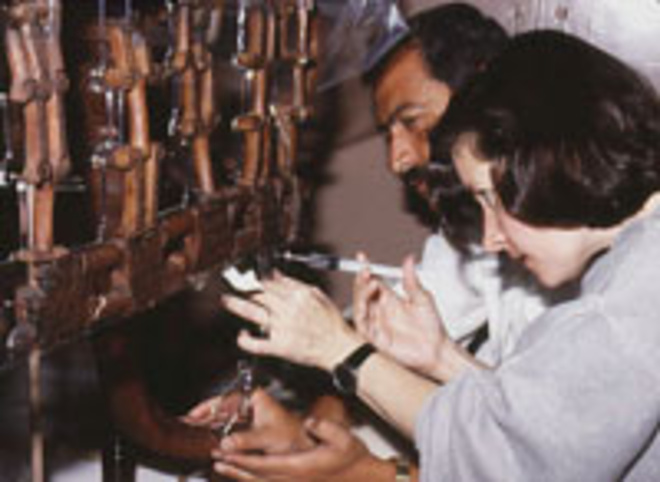
What brought you to the BGC?
I am now the only full-time faculty member who has been here since the very beginning. I was fortunate to have met Susan Weber when I was a curator at the Metropolitan Museum in the late 1980’s. When I heard that she was opening a graduate school for the study of the decorative arts I wrote her a letter— at the time I was teaching at Duke University— asking if ancient art would be part of the curriculum. Happily, she wrote back inviting me to join the staff. I was attracted to the Bard Graduate Center and its mission, because I have always been interested in the material culture of the ancient world, particularly in ancient furniture, ceramics, glass, metalwork, and jewelry.
What are your areas of interest?
I am an archaeologist, art historian, and illustrator. Since 1980, I have been working to conserve and reconstruct an important collection of ancient wooden furniture that was excavated in central Turkey at the site of Gordion—the capital of the kingdom of Phrygia in the early first millennium B.C. This summer we will conduct our 28th field season on these objects at the Museum of Anatolian Civilizations in Ankara.
I began to work on the collection in 1978. When I first went to Turkey to study the furniture, I found that the wood was beginning to deteriorate, as one might expect—these pieces date to the eighth century B.C. I realized that we needed a conservation project to accompany the research project, because the objects had to be strengthened before they could be handled. This was a challenge, because no one had ever conserved a collection of dry archaeological wooden objects such as this. Very few ancient wooden objects have survived outside of Egypt, where organic objects are typically well preserved because of the dry climate. In the Near East, however, the situation is much different. We developed a method that we are still using today (impregnation with a solution of Butvar B-98, a polyvinyl butyral resin). After the wood was consolidated, I was able to figure out how the individual wooden fragments fit together to make actual pieces of furniture. In almost every case, I was able to draw the wooden objects as they had appeared originally.
So, that’s what I’ve been working on all this time. I am now involved in producing the final publications on the wooden objects from Gordion; these are very complex, as they include hundreds of drawings and photographs, with contributions by many project participants on the conservation process, reconstruction of the pieces, and numerous scientific analyses. In addition to my work on ancient furniture, I have long been interested in all types of ancient craft and technology. I thought, and it turned out to be correct, that at the Bard Graduate Center I would be able to teach these things, and I am thrilled to have found a place that allowed me to do this.
How does your work fit in the BGC mission?
I’ve already touched on some aspects, but there are other ways my interests coincide with the BGC’s mission as well. One is my involvement with the protection of cultural property, which archaeologists are always interested in, but which, until recently, has not been taught to students on a very wide scale. While its importance is now being recognized, when I went to graduate school it was hardly mentioned.
When I first arrived at the BGC, Susan Weber asked me if I would like to organize a symposium onWorldWar II plundered art and its recovery and return. The Spoils of War in 1995 was the result, and we published the proceedings in 1997. The book has become a classic in the field of cultural property and its protection.
In its early days, the BGC was considered an experimental enterprise, as it embraced the history of design and the decorative arts in its entirety, focusing not only on works of art but also on their cultural context. Back then, when the so-called decorative arts were taught, if they were taught at all, the subject was usually considered to begin with the Renaissance or even later. It goes without saying that our approach makes for a broader and better curriculum. While we are still at the forefront, others now follow us.
What do you hope to pass on to your students?
First of all, my colleagues and I hope to pass on a comprehensive understanding of the field. We also want our students to graduate with a sense of confidence in their knowledge and abilities—the ability to conduct research, to think critically, and to convey their thoughts effectively in writing and in speaking. Personally, I hope that they will leave with an impulse to promote the protection of cultural property, and that they will recognize the significance of the material cultural of the world’s peoples not only regarding the past but also the present. I feel fortunate that our students are so very good. They are serious (although not without a sense of humor), they are hard working, they are interested, and they catch on fast. I like what I am able to teach, I like the focus of the institution, and the students are a dream. Working here, I feel that I am doing something useful with my life.
